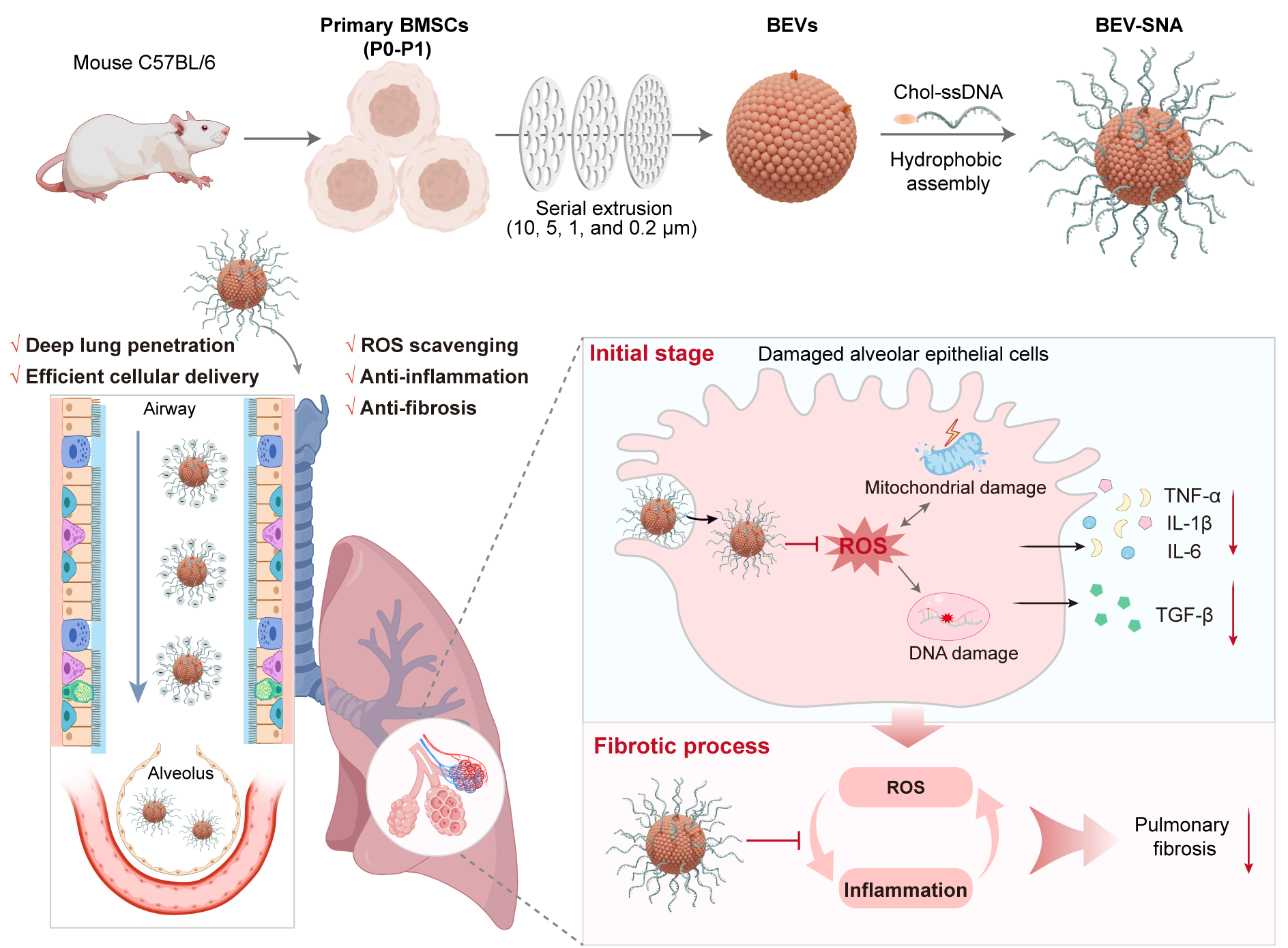Chinese scientists have developed biomimetic extracellular vesicle spherical nucleic acids (BEV-SNAs), a novel nanotherapy that shows exceptional efficacy against idiopathic pulmonary fibrosis (IPF).
The study was published in Aggregate.
IPF, a fatal disease causing irreversible lung scarring, affects over 5 million patients worldwide with a median survival of just 3-5 years. While current treatments for IPF, such as nintedanib and pirfenidone, approved by the U.S. Food and Drug Administration (FDA), only modestly slow disease progression without significantly prolonging survival.
Mesenchymal stem cell-derived extracellular vesicles (MSC-EVs) show great therapeutic potential, but face challenges such as low production yield, functional variability, and poor delivery efficiency to lung tissues, which limits their clinical application.
The Genetic Diagnostics and Treatment Materials Group at the Ningbo Institute of Materials Technology and Engineering (NIMTE) of the Chinese Academy of Sciences (CAS), has designed and synthesized a lung-penetrating BEV-SNA platform for IPF therapy, in cooperation with researchers from the Ningbo No. 2 Hospital and Shanghai University.
The team integrated mechanically produced BEVs from primary mesenchymal stem cells with cholesterol-modified DNA through hydrophobic assembly, contributing to a three-dimensional (3D) architecture.
“This dense 3D DNA structure can reduce mucus adhesion, thereby enhancing airway penetration and facilitating efficient cellular uptake in deep lung tissues,” said WANG Kaizhe, a corresponding author of this study.
This novel BEV-SNA platform achieves a 17.2-fold increase in vesicle production compared to natural extracellular vesicles.
In mouse models, BEV-SNA demonstrated impressive therapeutic effects in multiple stages. The treatment effectively cleared reactive oxygen species (ROS) to protect alveolar cells, reduced pro-inflammatory cytokines to suppress inflammation, and blocked collagen deposition to inhibit fibrosis. This therapy achieved a 50% survival rate in treated groups, significantly outperforming untreated controls.
This work offers a dual-action strategy addressing the ROS-inflammation-fibrosis cycle and enabling effective delivery to deep lung tissues. It may pave the way for innovative respiratory disease treatments and biomimetic nanomedicine design.

BEV-SNA-mediated therapy for idiopathic pulmonary fibrosis (Image by NIMTE)
Contact
WANG Kaizhe
Ningbo Institute of Materials Technology and Engineering
E-mail: wangkaizhe@nimte.ac.cn

